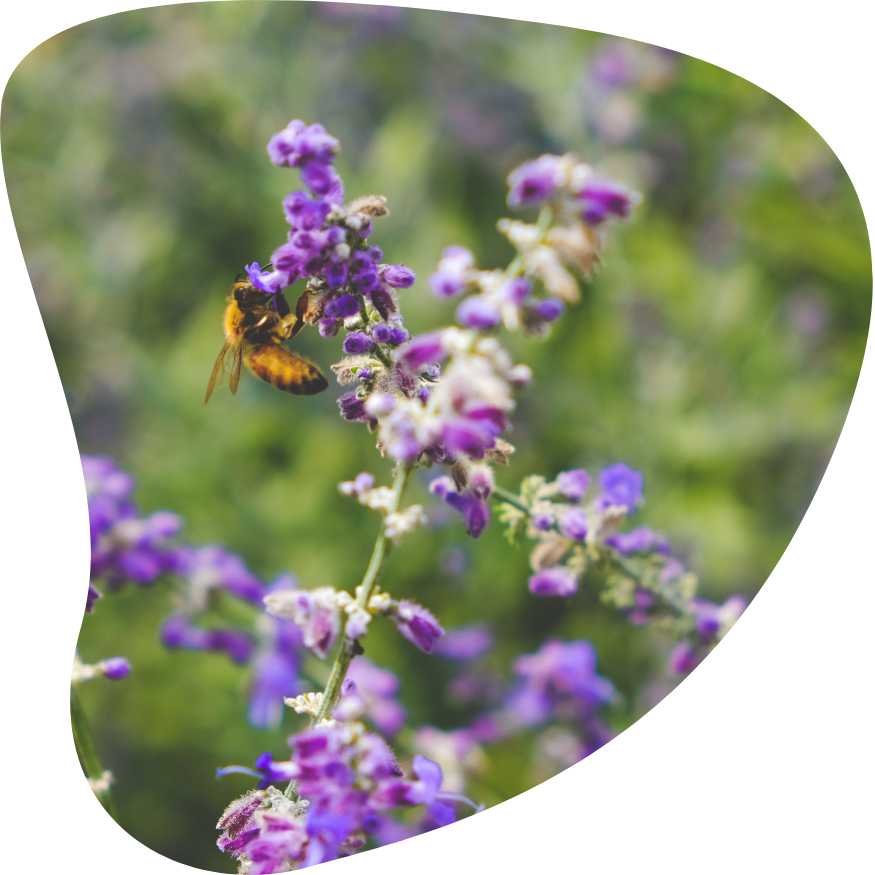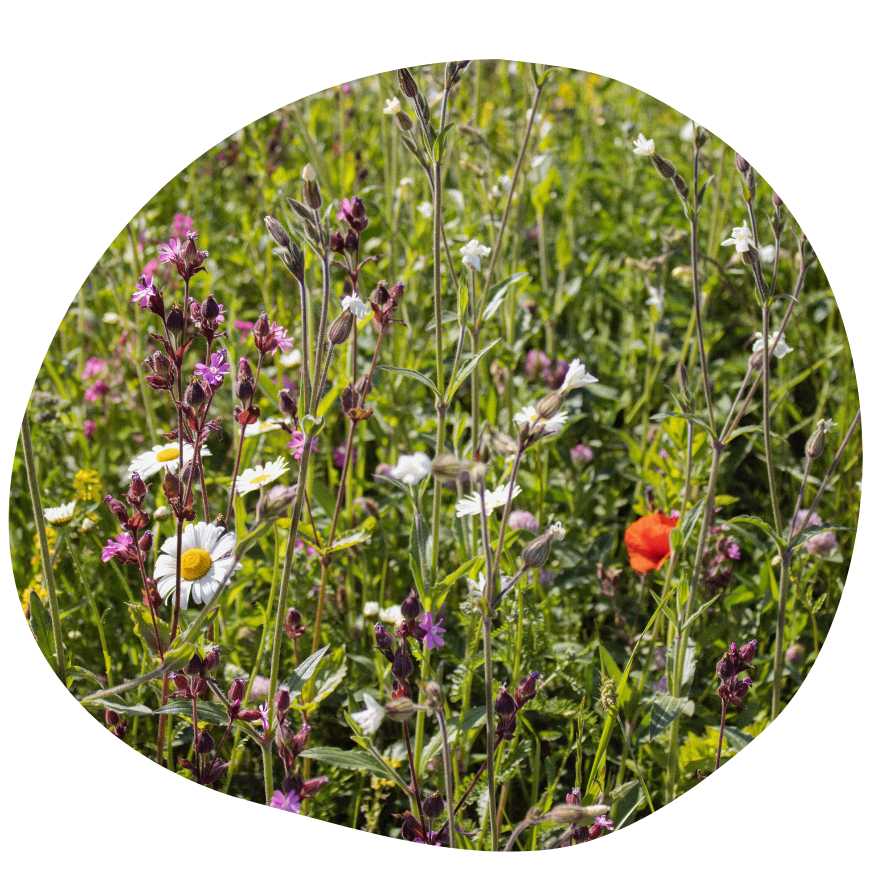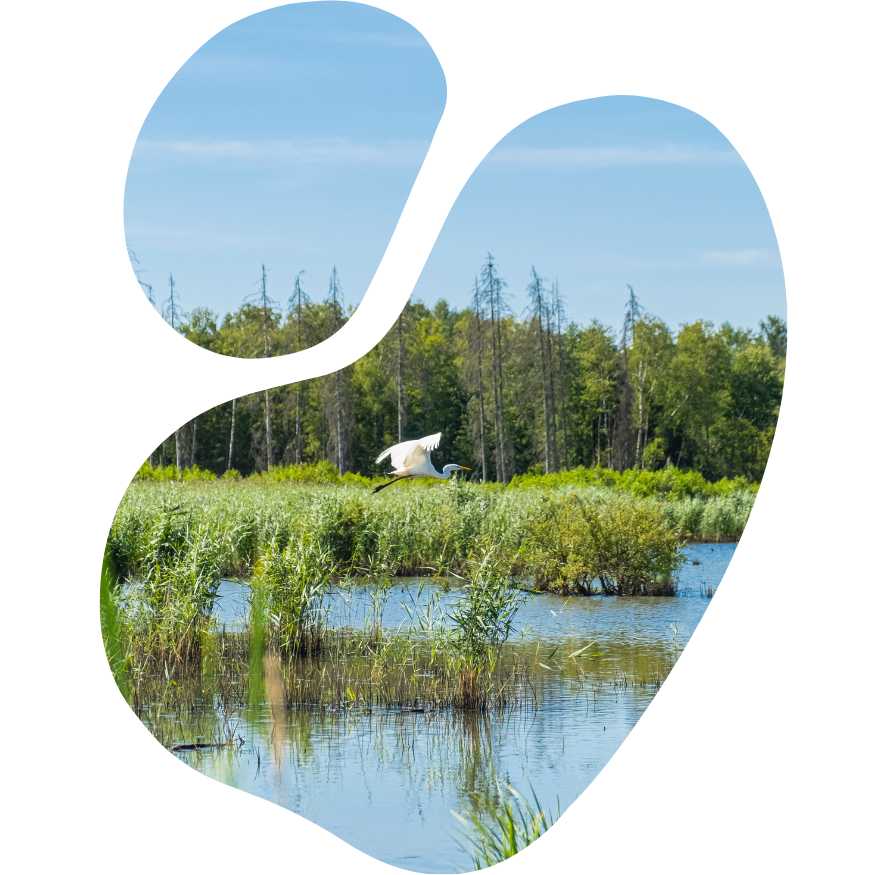What are Biodiversity Units?
Biodiversity units are part of the Biodiversity Net Gain (BNG) initiative introduced by the UK government to help improve biodiversity and climate conservation within the UK. They are the unit of measurement for evaluating biodiversity gains.
The idea behind it is to look specifically at the development and construction sectors and how moving forward, any company in this space must improve the biodiversity value of the area that they are developing.
In fact, breaking even is still not good enough, with the new rules stating that you must improve the biodiversity by 10% through something called Biodiversity Net Gain (BNG) and unless you prove at the planning permission stage in regards to how you are going to do this, you will not be allowed to move ahead with the project.
The way to do this is through the offsetting of any damage that you might do through the creation and purchasing of biodiversity units. Ideally, these will be created onsite where the development is happening. However, if that is not possible on the development site (and it often isn’t) then you are required to purchase off site biodiversity units from independent sellers. These could be from farms, local councils, private estates or any other landowners.
As a final step, if biodiversity units are not available onsite, and if biodiversity units are not available offsite, then you are allowed to purchase biodiversity credits directly from the government. You can find out more information about biodiversity credits here.

10% BNG Mandatory From January 2024
The government announced with the 2021 Environment Act that from January 2024 (April 2024 for smaller sites), all development projects must make sure that, as a condition of planning permission being approved, they increase the net gain of the biodiversity of an area by a minimum of 10% compared to the pre development biodiversity value.
Gigas

Biodiversity in the Environment Act 2021
The Environment Act 2021 was the legislation that prompted the creation of biodiversity net gain and biodiversity units.
It was an enormously important legislation that set targets across a whole host of green areas including aims to clean up the air, imporve the pollution of our waters, preserve existing habitats, deliver habitat creation, implement local nature recovery strategies and improve biodiversity across the country.
One of the most important parts of this was that these commitments were legally binding which makes it far more likely that these will be taken extremely seriously.
Criticisms for environmental targets for local authorities and corporations are that when you make them ‘guidance’ based instead of compulsory it is too easy to not achieve them.
The Environment Act covers a whole host of these issues but the core targets for all of this were as follows:
- Conservation covenants to ensure biodiversity and habitat conservation,
- Reverting the damage done to our rivers and lakes and returning all of them to their natural state by bringing pollution from sewers and mines down and also creating a more efficient infrastructure to ensure fewer leaks.
- Improve air quality significantly by cutting exposure to some of the most harmful air pollutants to people’s breathing and health.
- Significantly boost our marine life in our Marine Protected Areas by restoring 70% with the aim of having favourable conditions by 2042
- Increase current species levels by at least 10% by 2042 with step one being the half in decline by 2020.
- Creation of a Local Nature Recovery Strategy to highlight areas in need of biodiversity gain.
- Deliver our net zero targets by increasing the biodiversity in England with a specific goal of tree and woodland cover increased by 16.5%.

The Biodiversity Metric
You can calculate how many biodiversity units are required for a construction project using The Biodiversity Metric which is a tool that has been designed specifically for Biodiversity Net Gain.
Whether you are a developer, an ecologist, a local planning authority or a land manager, everything is tied into this calculator and is an incredibly important part of the biodiversity unit world.
It can be used in a variety of ways but its core purpose is as follows:
- To work out the value of the biodiversity units of a specific area of land
- To prove the biodiversity net gains or biodiversity net losses in a consistent way
- To create a baseline and then a way to track the impact of the biodiversity of a piece of land
- To directly compare different proposals for a site
You can get more information about the biodiversity metric here.
BNG Unit Trading
The result of this boost towards nature recovery has resulted in a whole new industry around buying and selling biodiversity units. But how does this BNG Unit trading actually work?
DEFRA and Natural England have been clear from the start that, although you will be able to buy Biodiversity Credits from them, the government will not be in charge of the trading for Biodiversity Units and that will very much be left up to the private market. Marketplaces like Gaia are the best way with which to either buy or sell Biodiversity Units and we have broken down the core information for you below.
Buying Biodiversity Units
Buying Biodiversity Units is a compulsory part of planning permission for any development or construction companies and is required in order to get approval from the relevant local planning authorities.
More importantly, you need to make sure that you are buying the correct type of Unit from the three core categories of Area Units, Hedgerow Units and Watercourse Units. During the Impact Assessment where you identify the correct Type, you also need to make sure that you are purchasing them in the correct location as the further you are away from the site the more of an impact it will have on the number of Units required.
Once you have assessed your exact requirements through the use of an ecologist you can go to the open market to purchase Biodiversity Units. The easiest way is through places like Gaia’s marketplace where you can quickly and easily filter by your exact requirements.
If you are unable to find the necessary Biodiversity Units then you are able to purchase Biodiversity Credits. However in order to do this, you must first provide evidence that you have tried to find the solution for your biodiversity net gain requirements through Biodiversity Units.
There are a variety of ways to provide evidence, however, the easiest of which is to download your search results on the Gaia Marketplace showing there are no Units available. This has been confirmed by Defra as an acceptable form of evidence.
Selling Biodiversity Units
Selling Biodiversity Units is a fantastic potential revenue stream for anyone with land who is looking for a revenue stream that won’t impact the natural environment. Especially as BNG Units can work nicely alongside other forms of diversification. However, it is important to note a few areas to be aware of. The first is that the creation of these Units is a 30-year commitment and must be adhered to. The second is that there will be a formal formal BNG Unit Registry run by Natural England with which you will need to officially register the Units that you create.
The process is relatively straightforward, however. You will require an ecologist to assess the land and run everything through the biometric calculator to work out exactly how many Units you can potentially generate and provide a clear plan and documentation of everything that will be required.
You will also need support from an environmental lawyer to make sure all the paperwork is sorted. This is important as developers will be looking for Unit Sellers who have this as it shows the legitimacy of the purchase.
Once you have the Units to sell you can create your own Habitat Bank on the Gaia Marketplace and, once your account is approved, are able to buy and sell your Units to developers looking for their requirements.
Land managers who want to offer their land must register it with the Biodiversity Gain Site Register Operator, Natural England.
BNG Unit Costs
Average prices for each biodiversity unit are around around £30,000 per unit.
Higher levels of distinctiveness are not more expensive, however you are likely to be able to generate more units per hectare which means that it will be more valuable to sell on BNG marketplaces.
Whilst the three main habitats (Area, Hedgerow and Watercourse) are all roughly priced at the same amount for now, we will likely see the prices split off once the industry goes live and supply and demand start to kick in.
If you would like to stay up to date in regards to the latest in Biodiversity Units please sign up to our newsletter here.
Useful Resources
Nature England Biodiversity Net Gain Benefits – https://naturalengland.blog.gov.uk/wp-content/uploads/sites/183/2022/04/BNG-Brochure_Final_Compressed-002.pdf
Calculating the Biodiversity Metric – https://www.gov.uk/guidance/biodiversity-metric-calculate-the-biodiversity-net-gain-of-a-project-or-development
Local Government Association BNG FAQs – https://www.local.gov.uk/pas/topics/environment/biodiversity-net-gain-local-authorities/biodiversity-net-gain-faqs
National Planning Policy Framework – https://www.gov.uk/government/publications/national-planning-policy-framework–2
